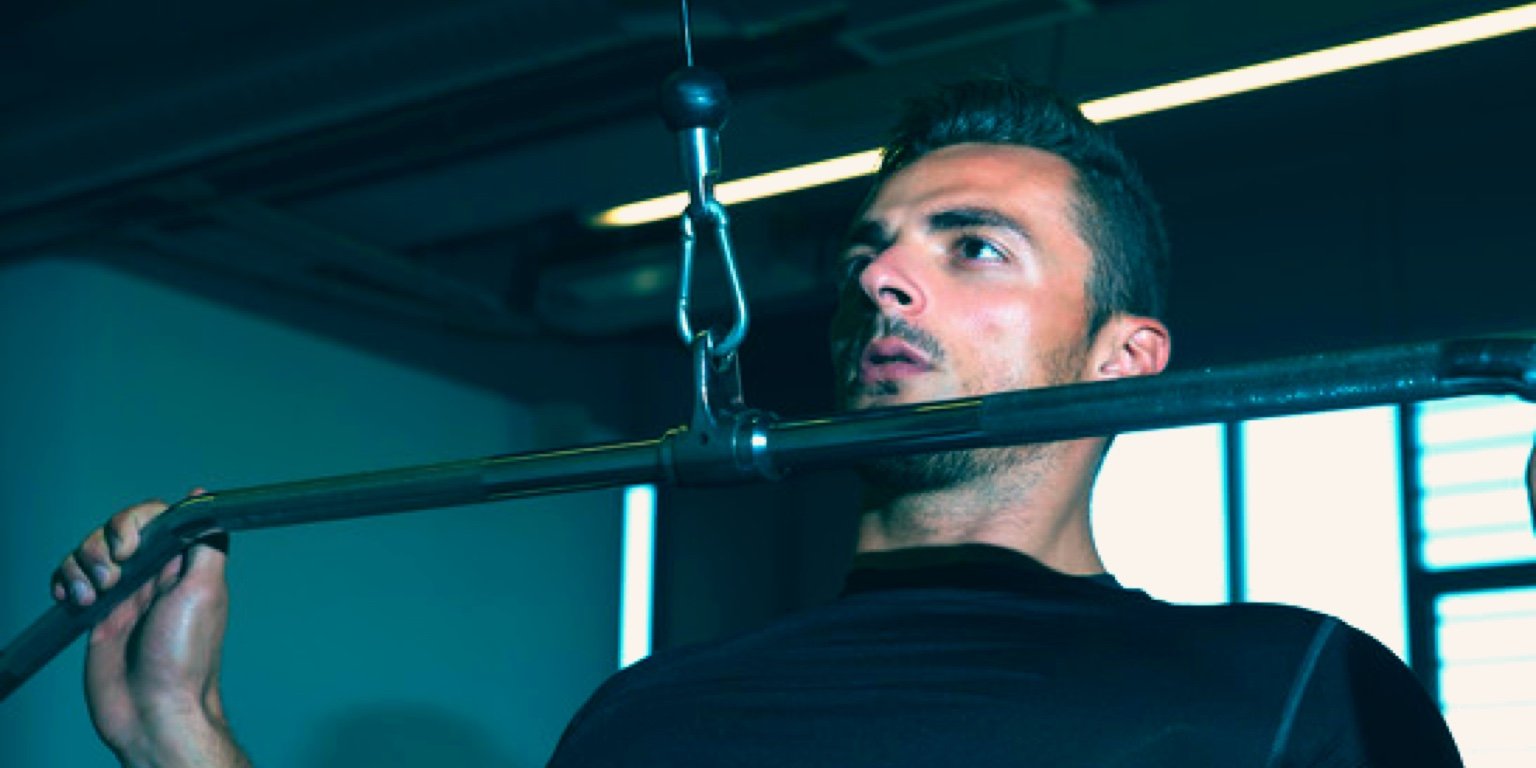
The lat pulldown is a popular gym exercise performed on a cable machine. You pull down a bar or handle towards your body from an overhead position, typically while seated but some variations involved standing or kneeling. The lat pulldown primarily targets your latissimus dorsi (lats) muscle in your back.
In this guide, we explore 10 variations of the lat pulldown.
Jump to
Lat pulldowns vs other lat exercises
Your latissimus dorsi (lats) are large muscles that run along the sides of your middle-to-lower back. This is the largest muscle in your back and gives your back its distinctive V-shape.
There are a number of exercises that target your lats, including pull-ups, bent over rows and T-bar rows. But how do lat pulldowns compare to these exercises?
- Lat pulldown vs pull-ups - Both pull-ups and lat pulldowns are compound exercises, meaning they target multiple muscle groups at the same time. In both cases, the primary target of the exercise is your lats. Pull-ups require a certain amount of upper body strength that beginners may not have. They can also put a lot of stress on your shoulders and wrists. Lat pulldowns, on the other hand, are more suitable for beginners - you can easily adjust the weight on the lat pulldown machine. This allows for better control so you can focus on the proper form.
- Lat pulldown vs bent over rows - The bent over row also targets your back muscles, but there's less emphasis on your lats compared to lat pulldowns. You perform bent over rows by hinging at your waist in a standing position; then you pull a barbell up towards your chest. This pose can result in significant strain on your lower back, particularly if executed with poor form. Because lat pulldowns are a seated exercise, there's less strain on your back. This not only reduces the risk of injury, but it also isolates the target muscles more effectively.
- Lat pulldown vs T-bar rows - The T-bar row is another excellent exercise that works your lats, as well as your rhomboids and trapezius muscles. One downside is that T-bar rows require a good level of core stability and lower back strength to perform safely. This can make it a challenging exercise for beginners. Lat pulldowns are an alternative, benefiting from a more controlled movement, which reduces the risk of injury.
Muscles
Lats
Your latissimus dorsi (lats) are large muscles that run along the sides of your middle-to-lower back. This is the largest muscle in your back and gives your back its distinctive V-shape.

Lats play a key role in pulling your arms down when extended above your head. Strong lats help with everyday activities and exercises like swimming and pull ups.
Your lats are, of course, the primary muscle being targeted by lat pulldowns. But some variations emphasize different parts of your lats muscles. The wide grip lat pulldown, for example, will target your outer lats more, whereas close grip pulldowns engage your lower lats more.
Teres major
Your teres major are the smaller back muscles located under your shoulder. Despite its size, it plays a key role in upper body function, including drawing your arms down and pulling them back, alongside your lats.
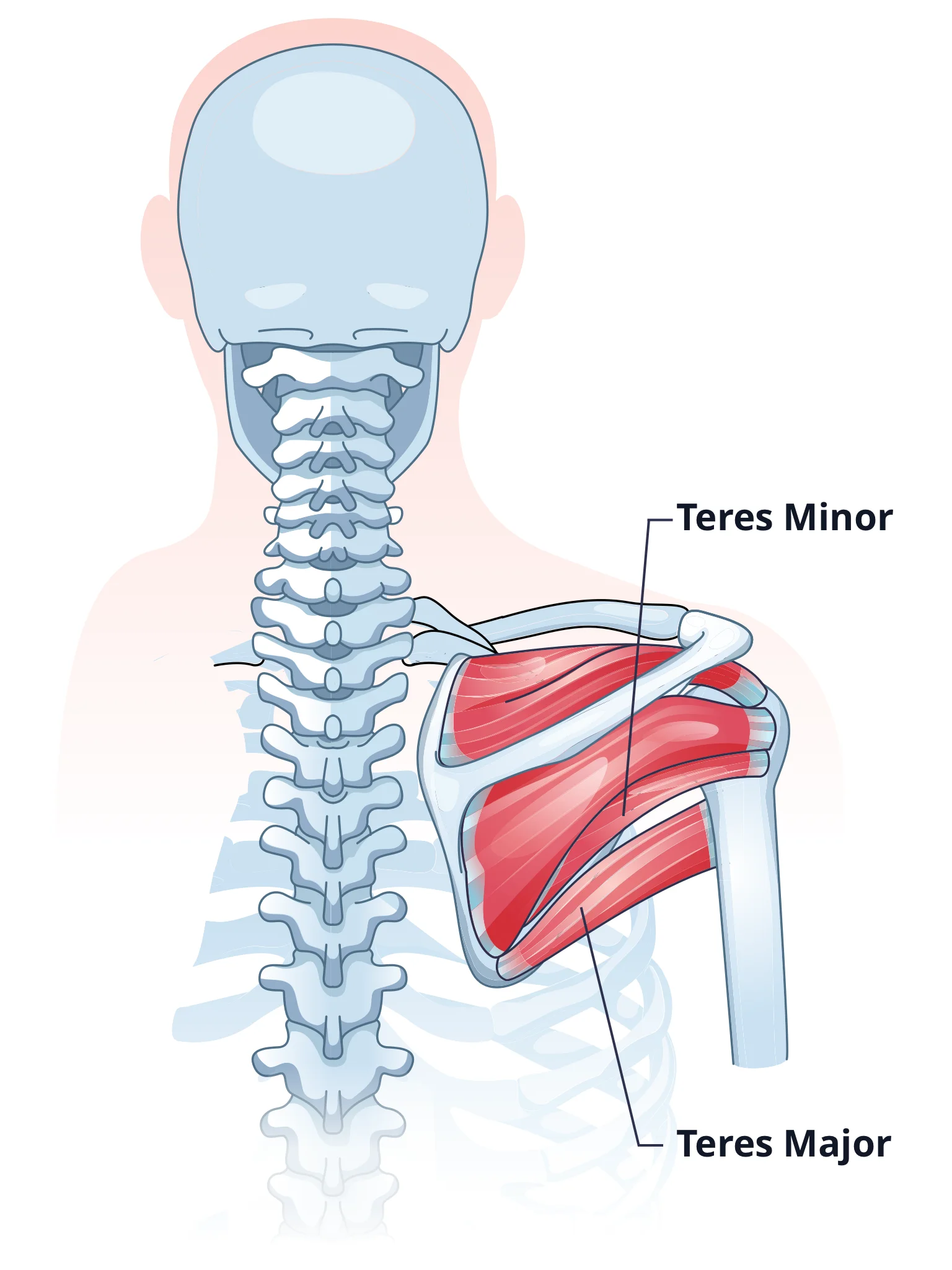
Strengthening your teres major can improve your shoulder mobility, increasing your range of motion in other shoulder exercises. Pull-ups and lat pulldowns are great exercises that engage your teres major.
The teres major is sometimes called "lat's little helper" - whenever your lats are engaged, your teres major muscles will also be engaged to pick up some of the load.
Rear delts
Your rear deltoids, also known as posterior deltoids, are located at the back of your shoulders. They assist in pulling back your shoulders. Developing your rear deltoids can help you achieve a balanced and rounded shoulder appearance. Stronger rear deltoids can also help with posture and reduce the risk of shoulder injuries in other exercises.
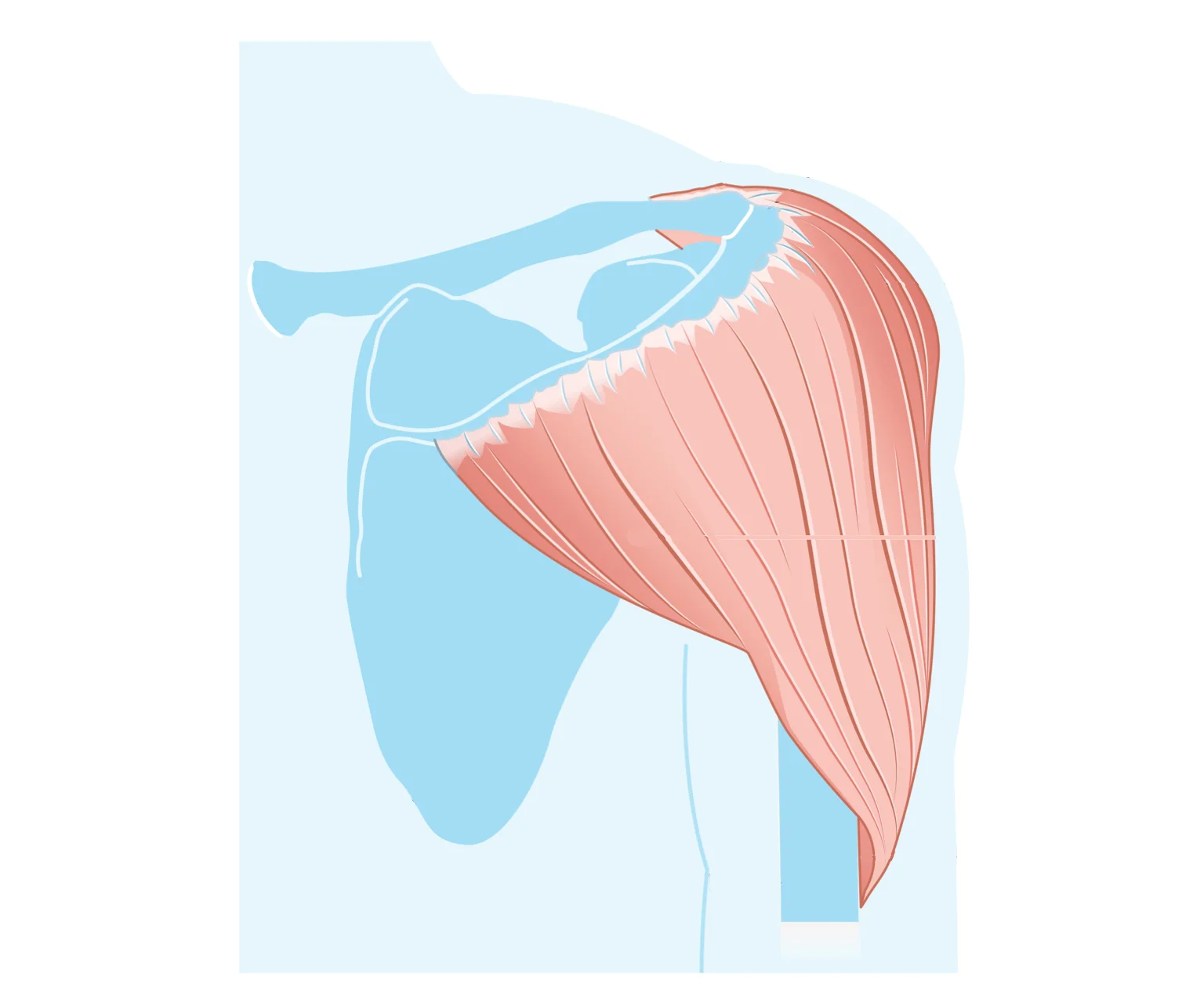
Your deltoids are made up of three parts – front (anterior) deltoids, side (lateral) deltoids and rear (posterior) deltoids.
The lat pulldown isn't specifically a rear delt exercise, but it will work your rear delts to some extent. Although it's possible to tweak the lat pulldown by using a wider grip and turning out your elbows, you should also include a rear delt exercise into your routine. Good choices include the rear delt flye and cable face pulls.
Trapezius
Your trapezius (traps) muscles are the large triangular-shaped muscles that extend all the way over the back of your neck and deltoids, extending right down to the upper middle part of the back. It is divided into three parts called the upper, middle and lower traps.
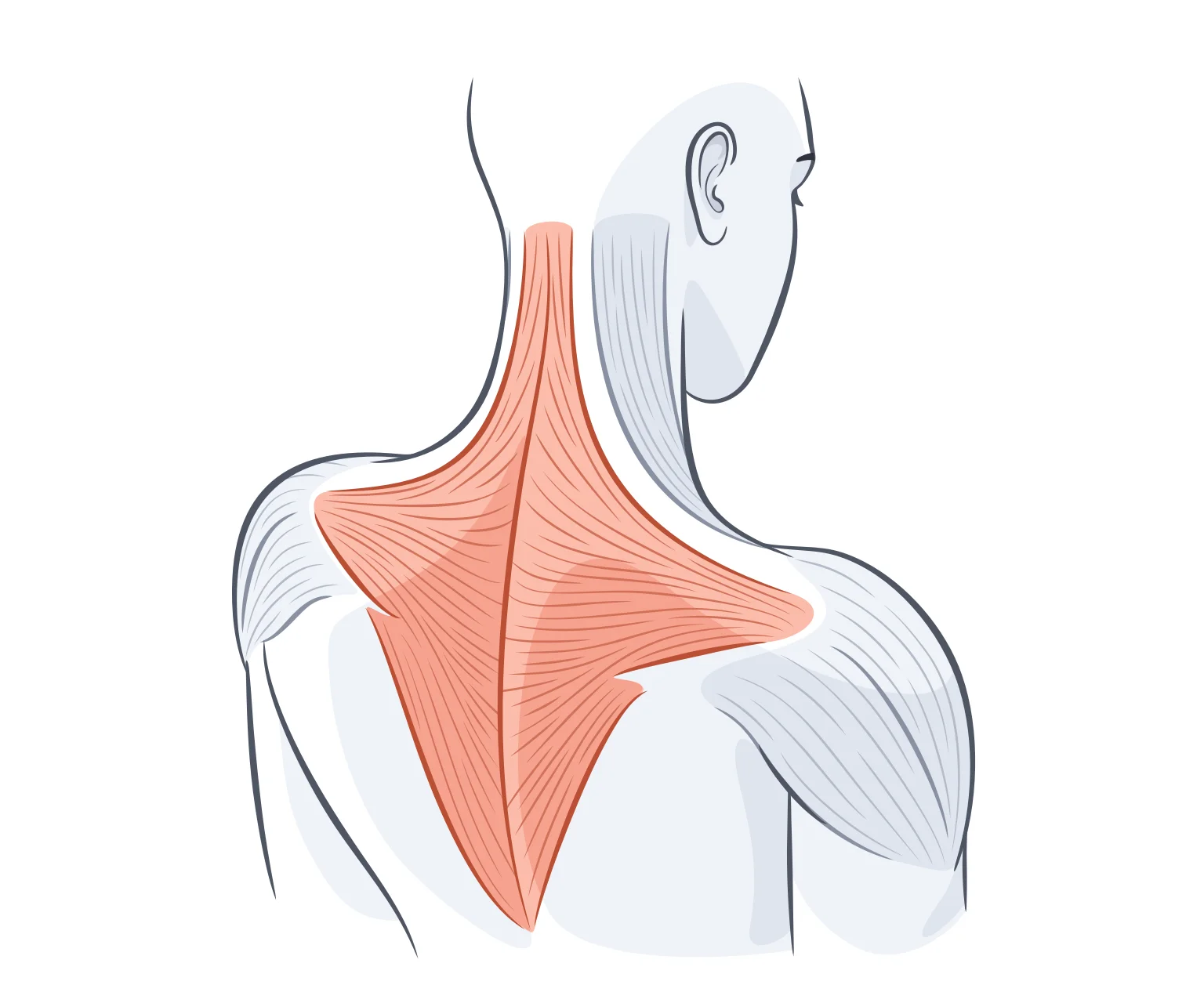
Your traps are responsible for moving your shoulders and assisting in the movement of your arms out to the side. Your middle and lower traps also help to retract and depress your shoulder blades.
Wide grip lat pulldowns engage your upper traps more, while close grip and reverse grip lat pulldowns can emphasize your lower traps.
Rhomboids
Your rhomboids are muscles in your upper back that sit under your trapezius muscles. Your rhomboids are crucial for upper back stability and posture, and allow you to pull your shoulder blades together.
The rhomboids are made up of two muscles – the rhomboid major and rhomboid minor. Together, these muscles form the ‘rhomboid’ shape. The rhomboid major is the larger muscle, and sits below the rhomboid minor.
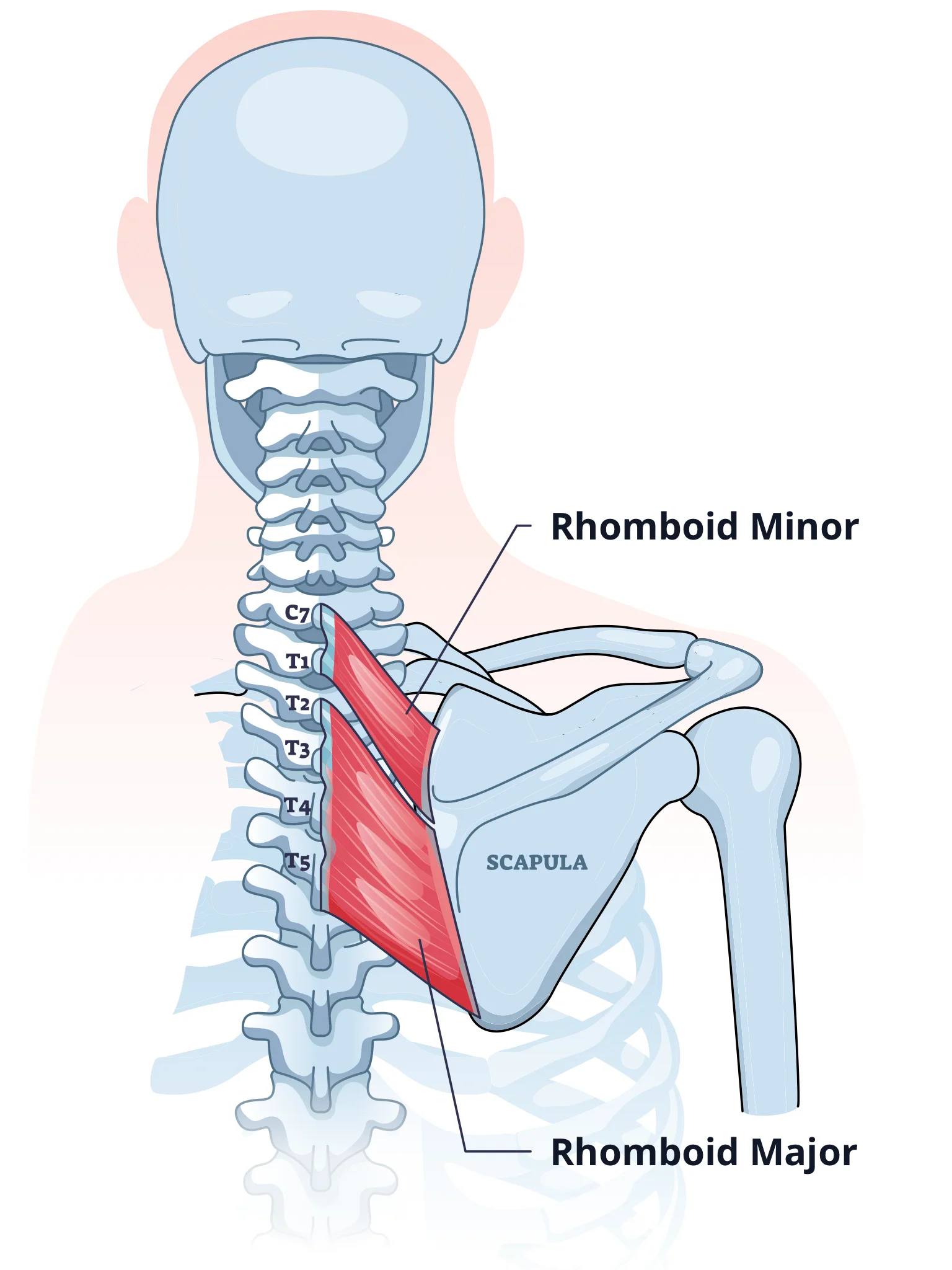
Rhomboids are much smaller than other muscles in your back. Your lats, for example, are the biggest muscles in your back and are much more powerful than your rhomboids. The lats help with pulling moves and everyday activities and exercises like swimming and pull ups. But while your rhomboids might be smaller, they play a critical role in stabilizing your shoulder blades.
Close grip lat pulldowns engage your rhomboids more than wide grip variation.
Lat pulldown
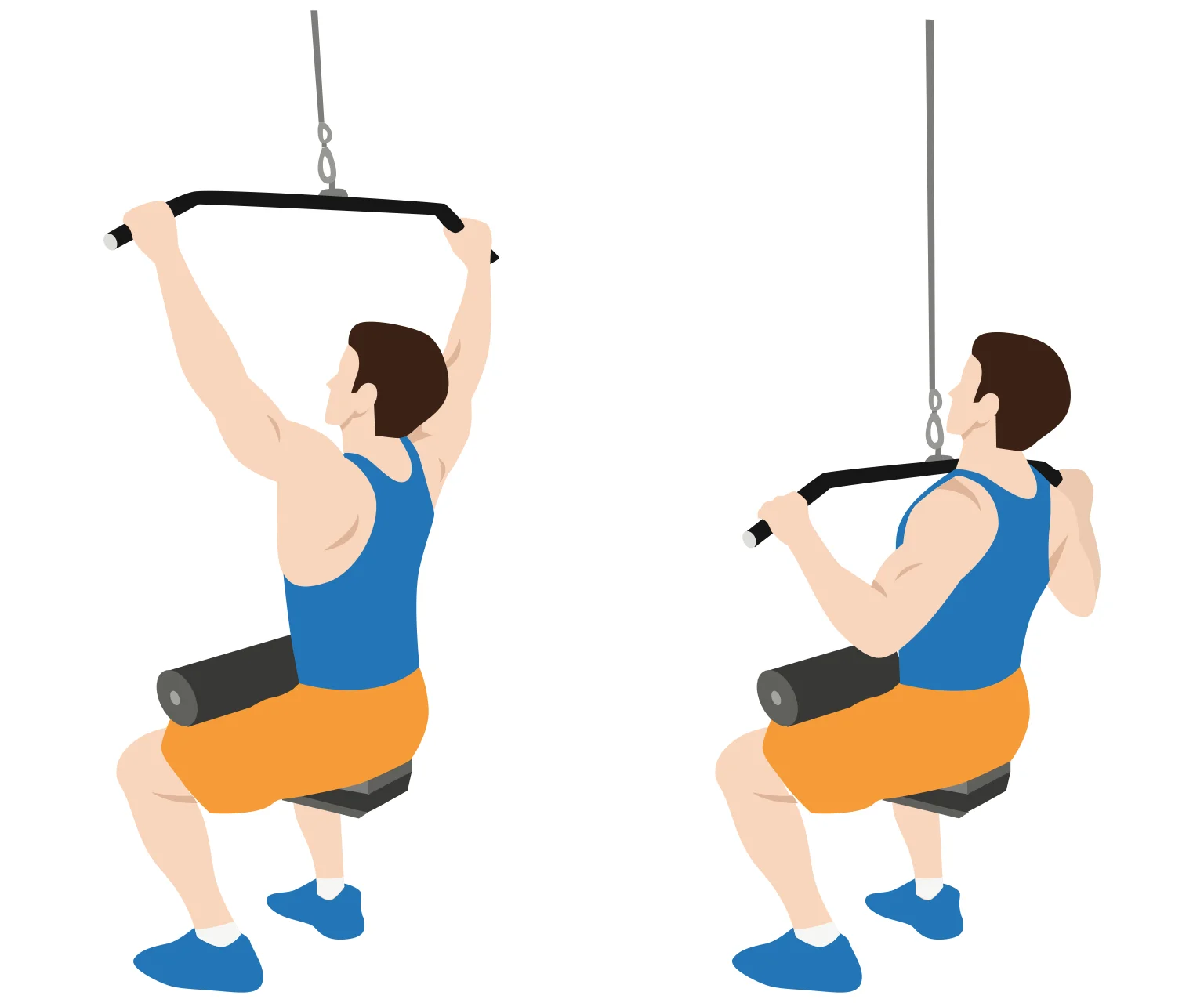
The lat pulldown primarily targets your latissimus dorsi (lats) muscles. It's an excellent exercise if you are looking to build a strong and wide back. Because the movement is easily controlled and adjusted on the lat pulldown machine, it's suitable for beginners and may be an option for those rehabilitating from injury.
In the traditional lat pulldown, your hands are placed shoulder-width apart on the pulldown bar. Your palms are facing forwards. This provides a balanced workout for your back.
You can include the lat pulldown in your back day or pull day workout routine.
How to do
- Sit at a lat pulldown machine.
- Grab the bar with an overhand grip, with your hands at shoulder-width apart on the bar.
- Pull the bar down towards your chest, keeping your back straight and your elbows close to your body throughout the movement.
- Squeeze at the end of the motion.
- Finally, slowly return the bar back to the starting position.
- Repeat for the desired number of reps.
Sets and reps
3-4 sets of 8-12 reps works well in most workout routines. This rep range is effective for both increasing the size of your back and developing strength. Use a weight that challenges you to complete the last few reps, but without compromising your form.
In your workout, you'll probably want to do lat pulldowns after deadlifts and rows, but before any isolation exercises.
Wide grip lat pulldown

Using a wider grip when performing the lat pulldown puts more emphasis on your outer lats and less emphasis on your mid back muscles. Doing this variation regularly can help you build a wide "V-shaped" back.
How to do
- Sit at a lat pulldown machine.
- Grab the bar with an overhand grip, with your hands wider than shoulder-width apart on the bar.
- Pull the bar down towards your chest, keeping your back straight and your elbows close to your body throughout the movement.
- Squeeze at the end of the motion.
- Finally, slowly return the bar back to the starting position.
- Repeat for the desired number of reps.
Close grip lat pulldown
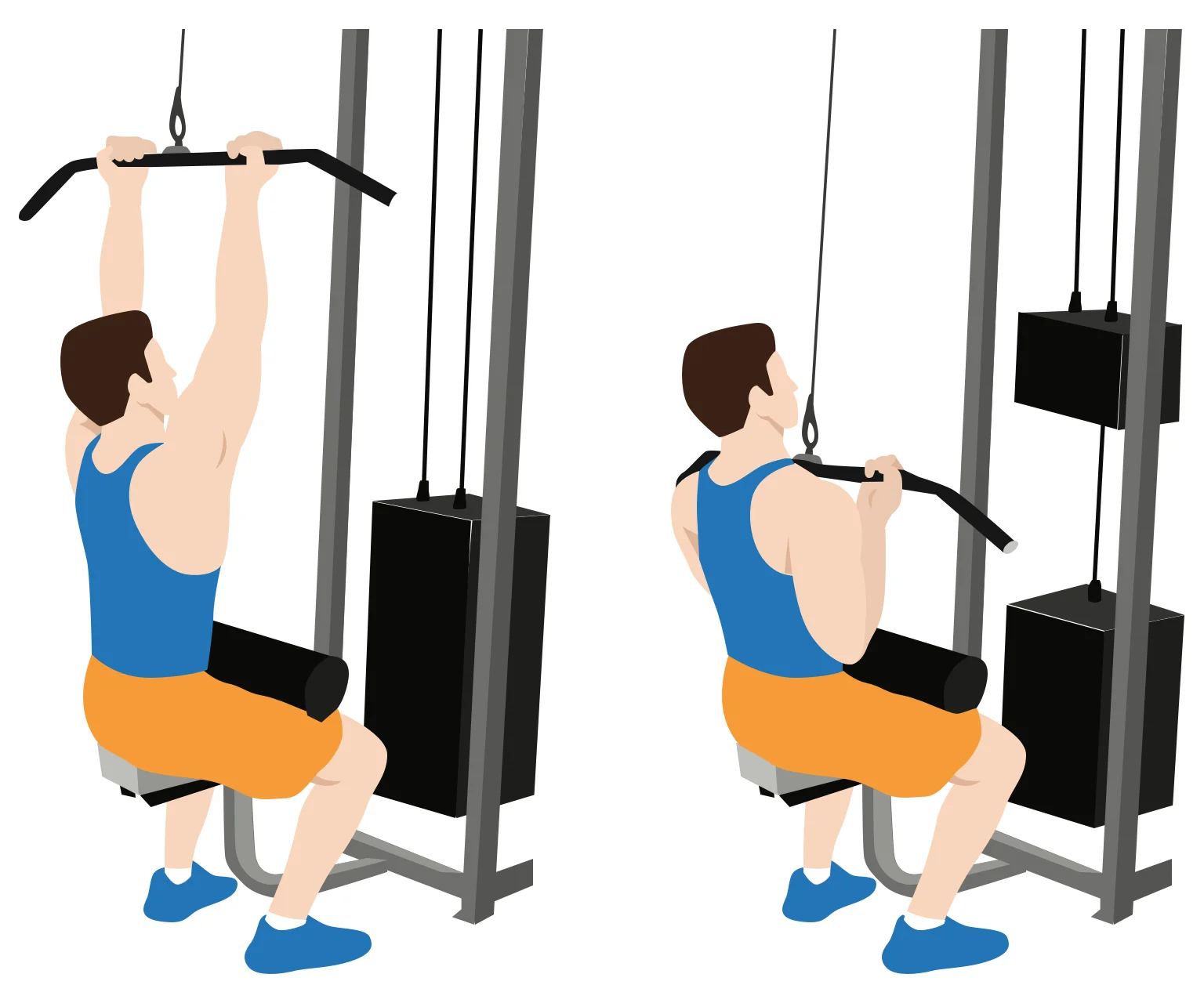
In the close grip lat pulldown, your hands are closer together. This places greater emphasis on your lower lats and mid back muscles, whereas the wide grip lat pulldown targets your upper lats more.
The close grip variation can help you develop thickness in your middle back, which can improve your back aesthetic.
How to do
- Sit at a lat pulldown machine.
- Grab the bar with an underhand grip, with your hands closer than shoulder-width apart on the bar.
- Pull the bar down towards your chest, keeping your back straight and your elbows close to your body throughout the movement.
- Squeeze at the end of the motion.
- Finally, slowly return the bar back to the starting position.
- Repeat for the desired number of reps.
Reverse grip lat pulldown
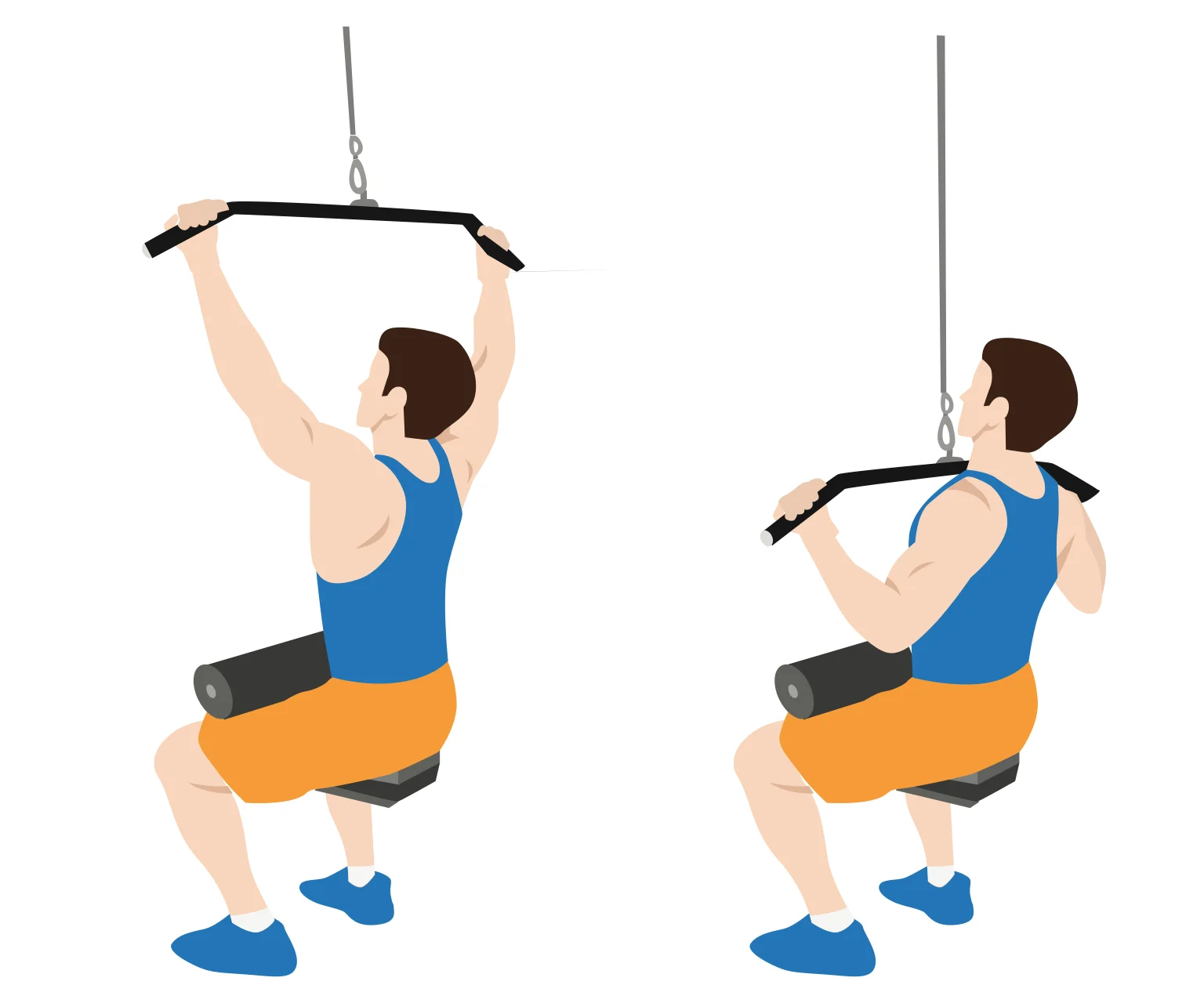
The reverse grip lat pulldown simply uses an underhand grip rather than an overhand grip. Although this is a small change, the effect is more engagement of your lower lats and biceps compared to the traditional lat pulldown.
Changing your grip style is a great way to add variety to your routine and ensure you are developing your muscles comphrensively.
How to do
- Sit at a lat pulldown machine.
- Grab the bar with an underhand grip, with your hands at shoulder-width apart on the bar.
- Pull the bar down towards your chest, keeping your back straight and your elbows close to your body throughout the movement.
- Squeeze at the end of the motion.
- Finally, slowly return the bar back to the starting position.
- Repeat for the desired number of reps.
Behind the neck lat pulldown
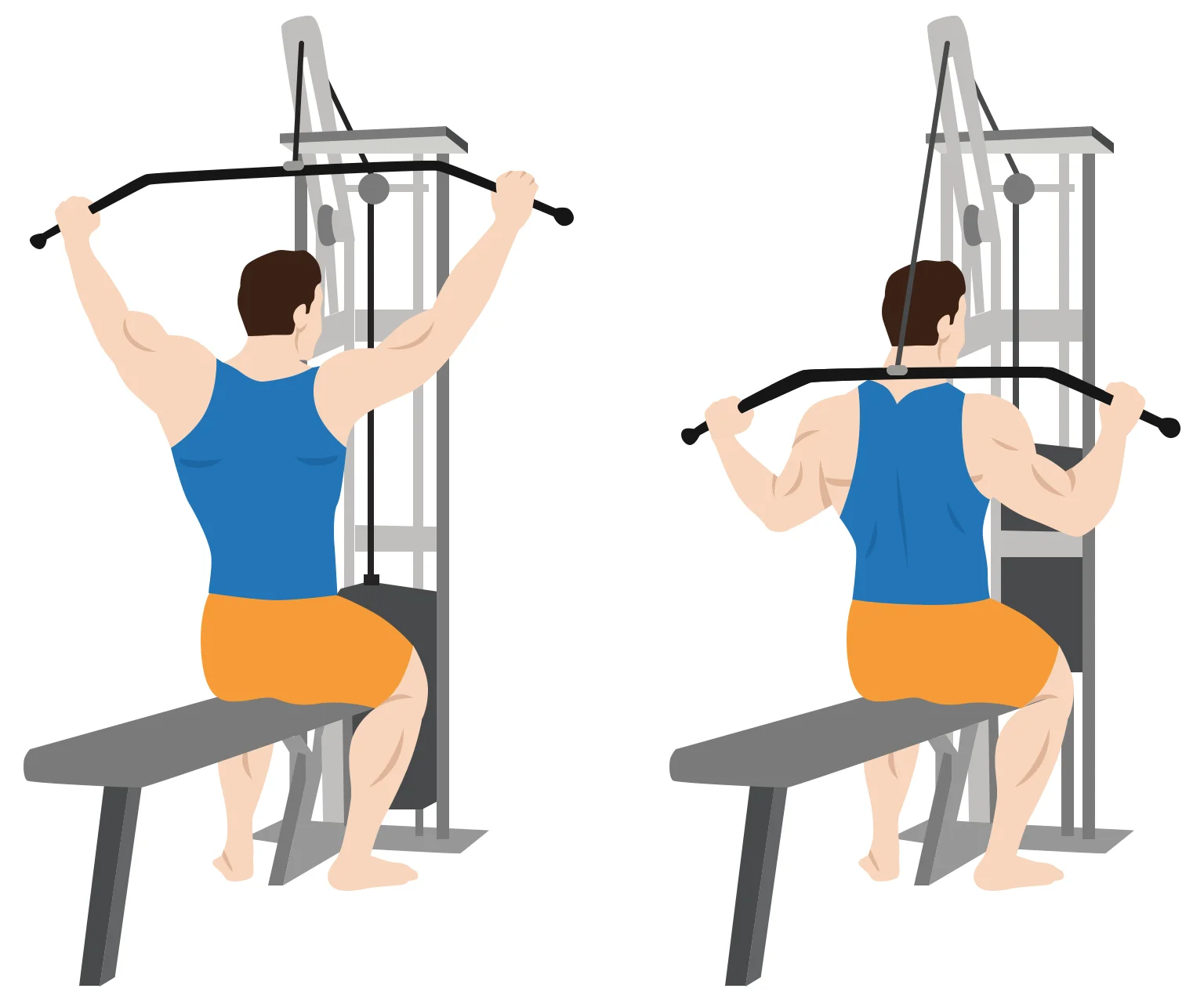
In the traditional lat pulldown, you pull the bar down in front of your body to chin level. In the behind-the-neck version, you instead pull the bar down behind the back of your neck. This variation activates different parts of your latissimus dorsi (lats).
It's another excellent exercise for developing with and thickness in your back muscles, as well as improving overall strength in your upper body.
How to do
- Sit at a lat pulldown machine.
- Grab the bar with an overhand grip, with your hands wider than shoulder-width apart on the bar.
- Pull the bar down towards the back of your neck, keeping your back straight throughout the movement.
- Squeeze at the end of the motion.
- Finally, slowly return the bar back to the starting position.
- Repeat for the desired number of reps.
Standing lat pulldown

Both the seated and standing lat pulldown target your lats, the biggest muscle in your back. The standing variation though introduces a different angle and demands more core stability. Because of this, you can generally lift a heavier weight while seated.
The standing lat pulldown has the benefit of improving your posture and balance skill.
How to do
- Set up a high pulley and select a moderate weight on the weight stack.
- Stand facing the machine with your feet shoulder-width apart. Alternatively, place one foot raised on a support for additional leverage, allowing you to lean back slightly.
- Grab the bar with an overhand grip. Your hands should be shoulder-width apart on the bar.
- Pull the bar down to your chest and squeeze your shoulder blades together. Keep your back straight throughout the movement.
- Slowly return to the starting position.
- Repeat for the desired number of reps.
Single arm lat pulldown

The single arm lat pulldown works one arm at a time. It allows a greater range of motion compared to the traditional lat pulldown. This makes it a good choice if you want to focus on developing strength on one side, i.e. to address a muscular imbalance.
How to do
- Set up a high pulley and select a moderate weight on the weight stack.
- Stand facing the machine with your feet shoulder-width apart.
- Grab the handle with an overhand grip.
- Pull the cable down to your chest and squeeze your shoulder blades together. Keep your back straight throughout the movement.
- Slowly return to the starting position.
- Repeat on the other side of your body and for the desired number of reps.
Straight arm rope lat pulldown
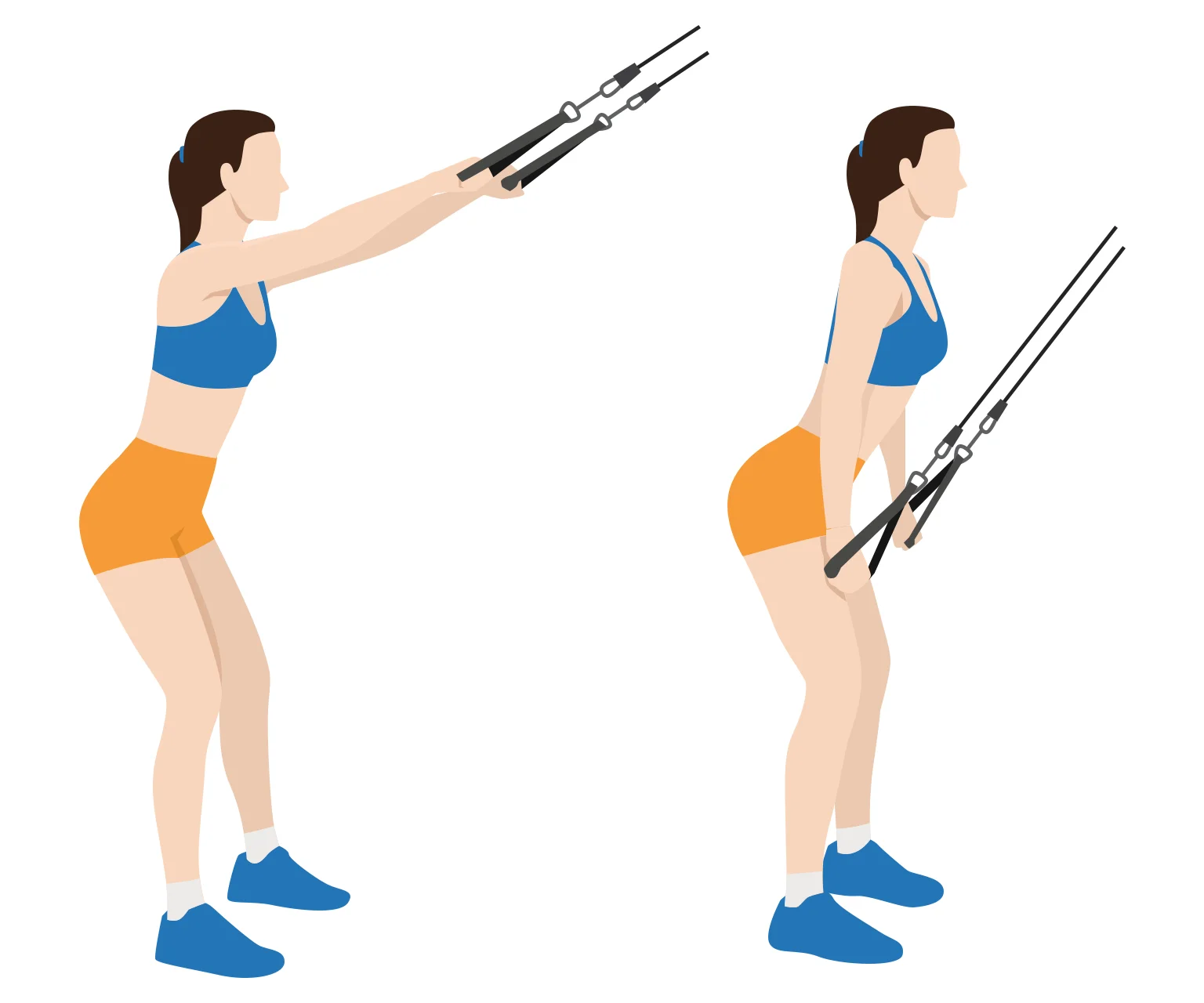
In the straight arm rope variation, you perform the pulldown using a rope attachment and a straight arm motion. This compares with the straight bar and a bent arm motion in the traditional lat pulldown.
How to do
- Set up a high pulley and select a moderate weight on the weight stack.
- Stand facing the machine with your feet shoulder-width apart.
- Grab the handles with an overhand grip.
- Pull the cables down to your thighs, keeping your arms straight through the entire movement. Keep your back straight throughout the movement.
- Slowly return to the starting position.
- Repeat for the desired number of reps.
Lever front pulldown
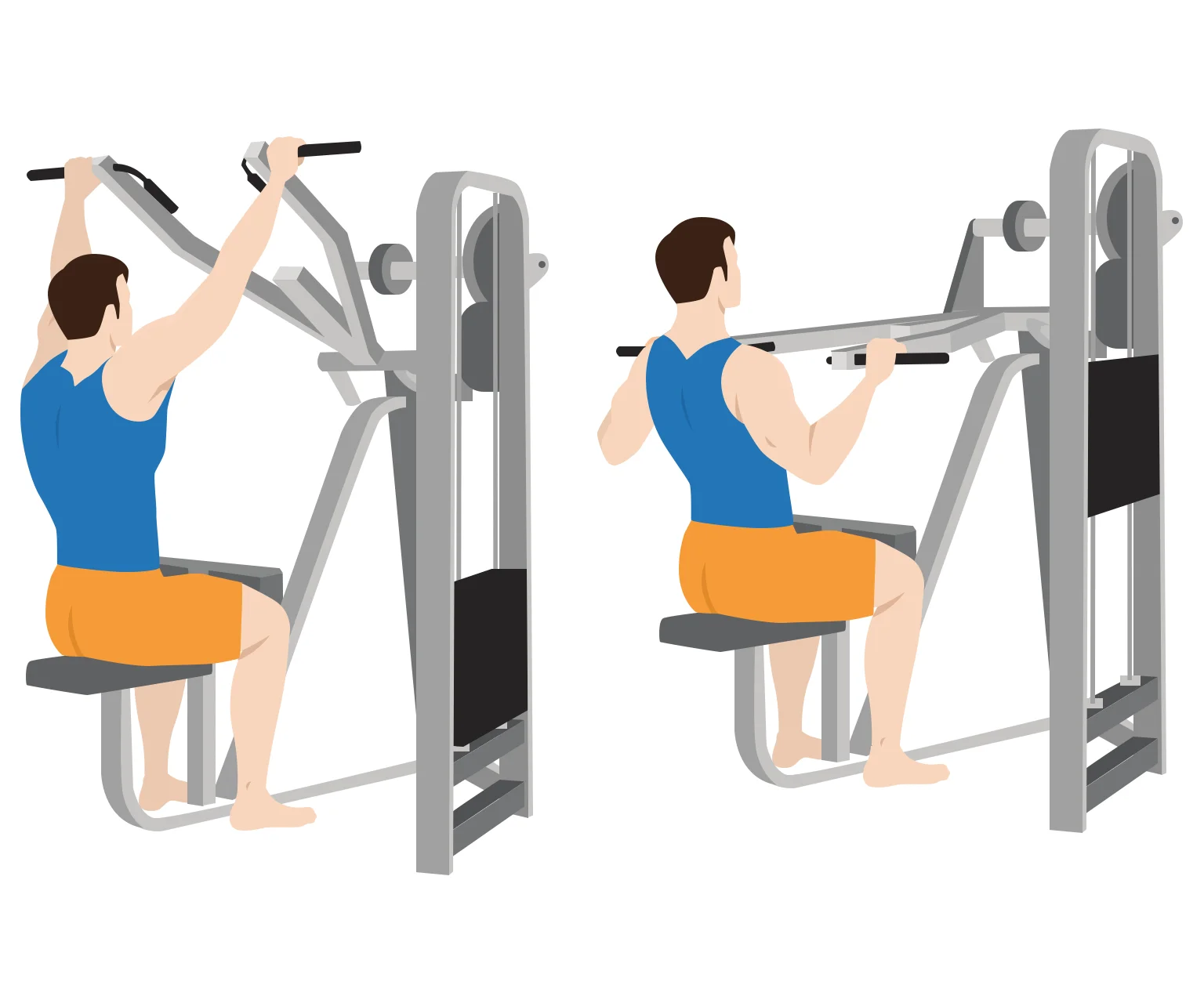
The lever front pulldown and lat pulldown both target your lats muscles. This variation of the exercise uses a lever machine with a fixed bar, which provides more stability than the cable machine used for the lat pulldown.
The grip style used in a lever front pulldown is usually wider and overhead, so this exercise will hit your lats in a slightly different way.
How to do
- Adjust the lever machine to your height and select a moderate weight.
- Grab the bar with an overhand grip and sit down while keeping your arms extended.
- Lean back slightly, then pull the bar down to your upper chest.
- Squeeze your shoulder blades together and hold for a few seconds.
- Slowly extend your arms back to the starting position.
- Repeat for the desired number of reps.
Kneeling lat pulldown
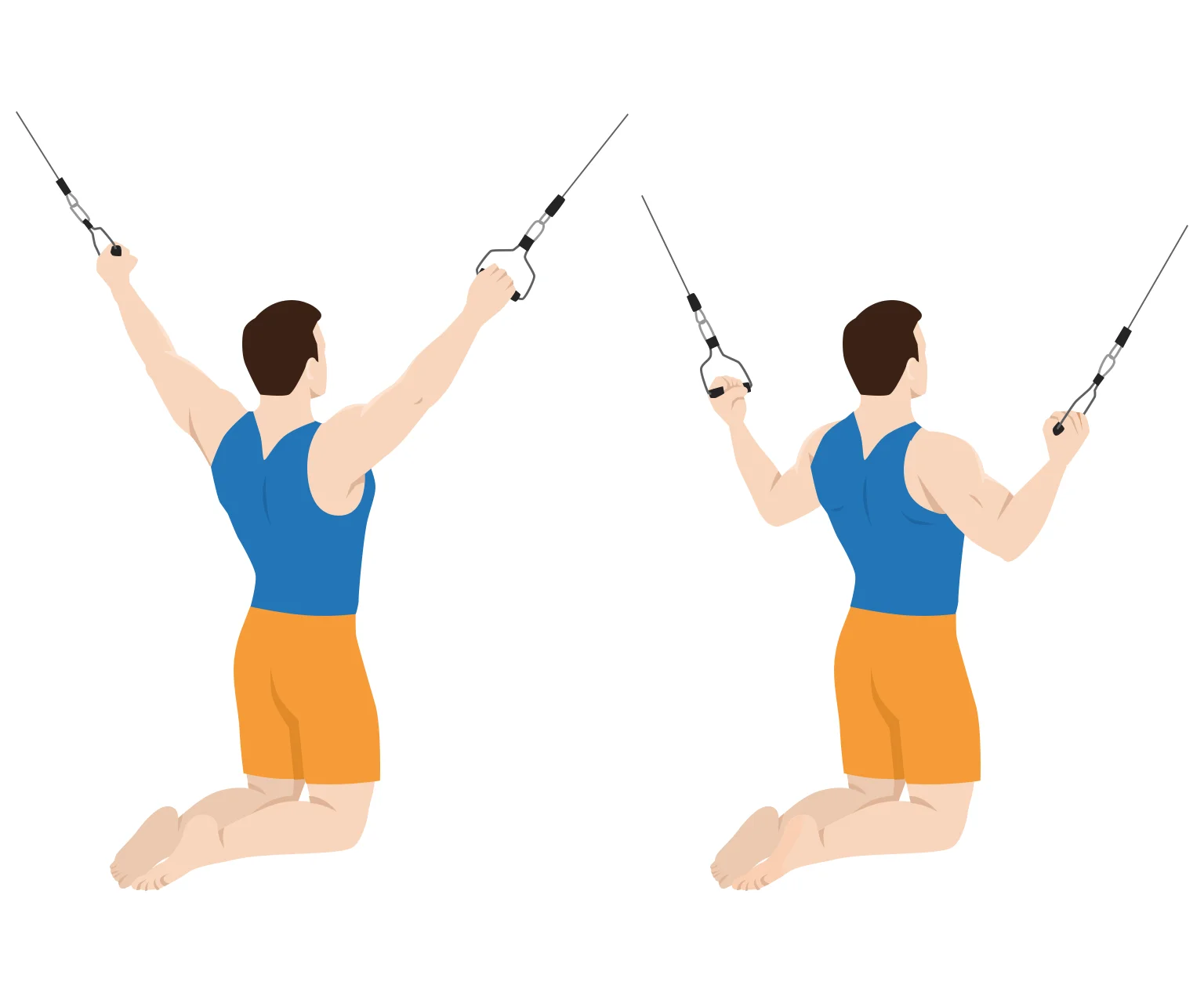
The kneeling lat pulldown is a similar exercise to the traditional lat pulldown, although you are not seated in the lat pulldown machine. Instead, you kneel down while performing the pulldown. This position requires more engagement from your core.
How to do
- Set up a high pulley and select a moderate weight on the weight stack.
- Kneel down in front of the machine.
- Grab the handles with an overhand grip. Your arms should be extended up away from your chest.
- Pull the cables down to your shoulder height. Keep your back straight throughout the movement.
- Slowly return to the starting position.
- Repeat for the desired number of reps.
Tips
Slow it down
You can change the speed at which your perform the lat pulldown exercise. Slow and controlled movements will increase the time under tension for your lats. This will keep your muscles engaged for longer, ensuring your lats are doing the work rather than momentum.
Faster movements can get your heart rate going and have some cardio benefit, too!
Adjust the weight
A key benefit of the lat pulldown is your ability to easily increase or decrease the weight.
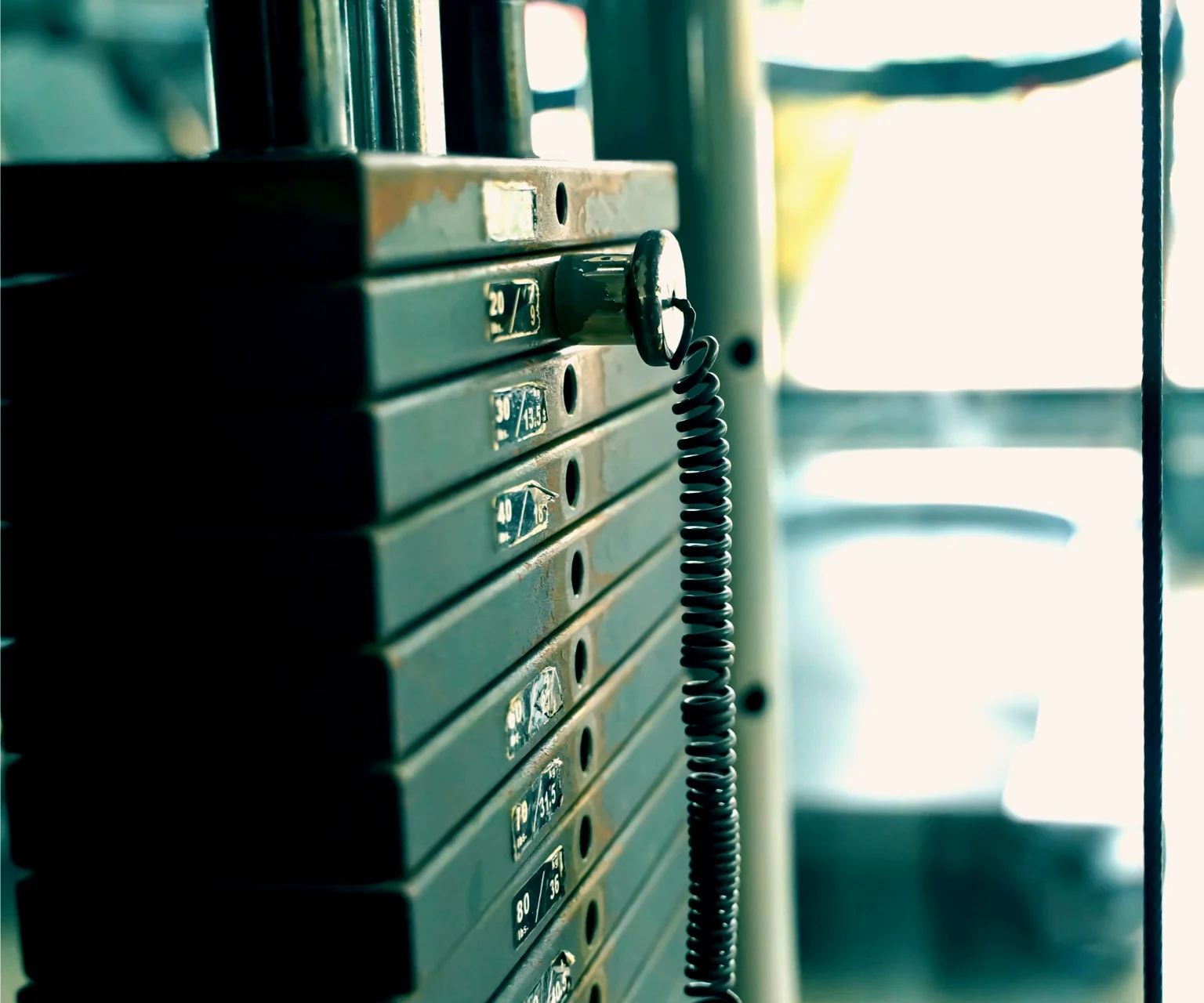
If the exercise feels too easy, increase weight. If you are finding it difficult to complete all reps with the proper form, decrease the weight.
